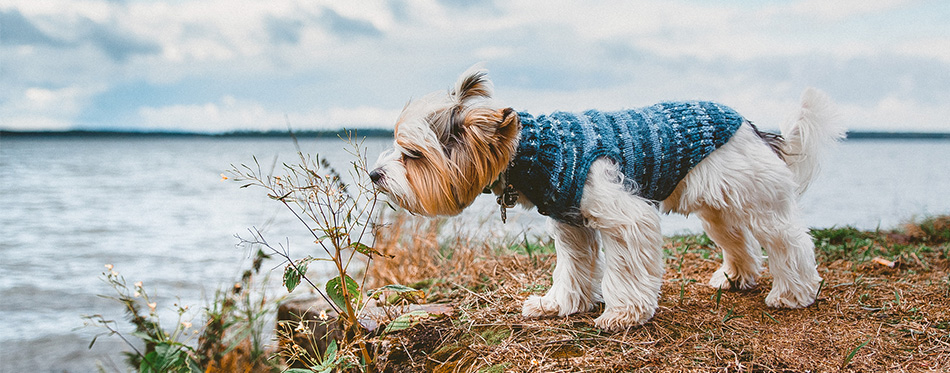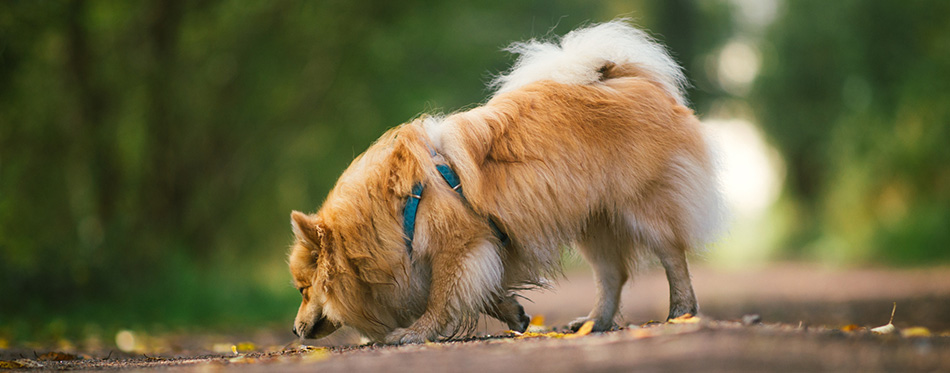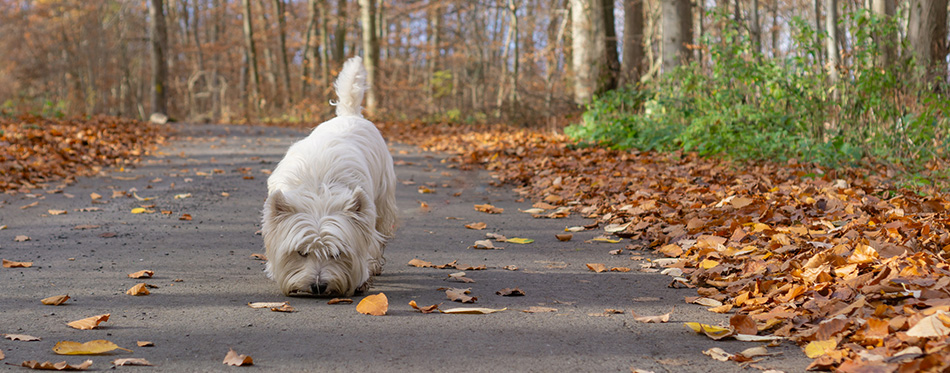It’s no secret that dogs carry an incredible sense of smell, they just can’t help to sniff at any and everything they come across; yes, that includes your butt. No matter how pungent the odor may be, dogs just love to sniff. Of course it’s in their nature, but have you ever wondered what gives them that incredible sense of smell? Strange as it may seem, we should be fully aware that a dog’s sense of smell is one major feature that makes it unbelievable.
Despite the human susceptibility to nasal allergies and reactions to various smell, the olfactory responses in our noses are a mere six million. Dogs, on the other hand, possess up to 300 million of these responses, making them olfactory beings rather than visual beings like us. Every dog is naturally fascinated by the various things their noses identify, and the nature of the said substance is entirely irrelevant to them. Instead of being disgusted by some of the things they smell, they’re filled with interest and intrigue. It doesn’t matter if its pee, poop, stale bread or spilt milk, their first call is to sniff it, and probably taste it, as all curious dogs will do.
In a quest to better understand the hypersensitive sense of smell possessed by our furry and loyal best friends, we have sniffed out and compiled a list of intriguing facts pertaining to their extraordinary noses.

A Powerful Sense of Smell Isn’t From a Good Nose
Nasal anatomy is everything when discussing the smelling skills of dogs and other animals. The structure of their noses varies significantly from that of humans, and this improves their general smelling skills. The nostrils of a dog are designed to operate independently of the other, identifying smells from entirely different directions. Each snout of a dog possesses a separate opening that permits inhalation and exhalation, unlike our nostrils, where breathing in and out is done with the same nostrils.
Besides their more advanced nasal anatomy, the different behaviours of humans and dogs determine their different smelling skills. Naturally, dogs move around with their noses to the ground, continually staying alert for new smells. Humans, on the other hand, have their heads high up, especially during dog walks, always in a hurry to move along. Unlike pups who dedicate time and effort to figure out the difference between scents by their constant sniffing, humans don’t take time to sniff anything. It will be weird of us to sniff one flower for five minutes, wouldn’t it? The sense of smell of a human isn’t half-bad, and it deserves more credit than it receives. The next time you’re out with your dog on a walk, try being like him (or her) for a while and join in to discover new scents. But please, try keeping your head off the ground!
There’s No Such Thing as a Good or Bad Smell
The spectrum of smell descriptions humans have developed is limited to an extent, unlike that of dogs. For many of us, we identify the scent of a rose as good, and the perfume of rotten fish as bad. The highly developed sense of smell dogs possess is unusual, especially since it breaks down a significant smell into little, intricate components. An example is the smell of freshly baked bread. The nose of any dog is immediately able to smell not just the cookie, but also the eggs, butter, flour, and sugar, while humans will only regard such a scent as delicious.
A Million Times More Powerful Than Humans
There’s no other way to put it – a dog’s sense of smell is just amazing! Dogs win over humans when it comes to nose sensitivity, and there’s nothing we can do to change that fact because of numbers from research back it. With countless variables in existence, it’s been discovered that the smell of a dog is up to 1,000,000 times more impressive than that of humans. Also, dogs are said to be able to detect most odors at concentrations of parts per trillion, a feat we cannot compete with even if we tried. The average dog can detect scents that have long evaporated within a broad area with ease, while a human may only identify faint trails of that scent.
Another amazing factor that makes a dog’s sense of smell so powerful is due to the Jacobson’s organ. This is a scent receptor that is independent of the brain’s olfactory areas and is found in the mouth of dogs, specifically in the roof of their mouths. This means that it doesn’t communicate directly with the olfactory regions of the brain, neither is it receptive to ordinary odors. This organ is designed to work directly with a section of a dog’s mind that coordinates basic emotions and mating actions.

Dogs Have a Sense of Smell Which Can Detect Drugs
It is true that all dogs possess a great sense of smell in dogs; in fact, most of not all dogs are blessed with the skill to smell anything from miles aways. However, research has identified breeds with the most potent sense of smell amongst them all. The Bloodhound is the first on the list with the highest sense of smell, and there are many others such as the German Shepherd, as well as the Labrador. This makes it easy to understand why such dogs work best as detection dogs that are often recruited into police academies for drug identification and the likes.
Dog Noses Are Excellent at Detecting Nasty Smells
We all love just how cute and loyal dogs prove themselves to be, but after your dog rolls around in some pungent odor, you might not want to come too close. It’s evident that dogs can be quite weird, primarily relating to matters of smell. They sniff anything and everything, from the butts of other dogs to park benches and even our precious little behinds. Very similar to human cases such as myopia, the sensitivity of dogs to scents varies greatly. Some odours can be identified by dogs effortlessly, despite their generally superior sense of smell. All smells with heightened levels of butyric acid are easily recognised by dogs, and their robust and foul-smelling nature characterises these smells. The nastier the scent, the more significant your dog’s ability to pick up its trail!
If you’re finding it hard to believe, think back to the last time your dog came back home smelling foul. Chances are, they had previously enjoyed the company of the most offensive smelling substances, and spent a lot of time sniffing and rolling in it until there was nothing left. Covering themselves in pungent substances is a natural feature that dogs proudly possess.
Butt Sniffing Is a Way of Understanding All the Tiny Details
As humans, we often engage in conversation with other humans to know them better. For dogs, they can learn more about one another without saying a word. It all lies in their sense of smell. On both sides of their anus, dogs have two tiny pouches that release a fluid used in knowing more about one another. This fluid naturally sounds pungent to humans, but it is the dominant mode through which dogs can know the behaviour, age, gender, health, reproductive status, personality, diet and even emotional state of one another. This unique communication method is second nature to dogs, so much so they try it out on humans.
Don’t tag your neighbour’s dog as rude or think she’s out to embarrass you when he pokes his nose into your crotch or butt. He’s merely trying to learn a thing or two about you.
A Dog’s Sense of Smell Cannot Be Deceived
Besides pungent odours and the various components of one dominant scent, dogs can pick up on our emotions with their nose, thanks to its compelling structure. Their noses can identify feelings of anxiety, fear, sadness and even happiness. Dogs can smell adrenaline, the body’s fight-or-flight hormone, while the best any human can do naturally is to feel it rush through their veins. Our system transmits signs to the surface of our skin through fear and anxiety symptoms such as increased blood flow and heart rate, and dogs can detect this. You might try your very best to mask your emotions with an extra wide smile, but the truth is that your best friend and greatest companion knows precisely how you’re feeling.

Conclusion
Our love for dogs is due to how amazing they are, and their powerful sense of smell is one of the many reasons, coupled with their unfailing loyalty and endless love. In summary, we’ve discovered more about the nose structure of dogs, how they prefer stronger, more pungent scents, why they can’t distinguish between good and bad smells and also why they prefer to sniff each other’s butts as well as the butts of others. Their noses aren’t that different from ours, and they only smell the detailed versions of what our noses can identify. Spending a lot of time with your best friend is vital, as they get to know you in detail, so much so they can quickly detect your scent from a crowd of people, walking towards them.

